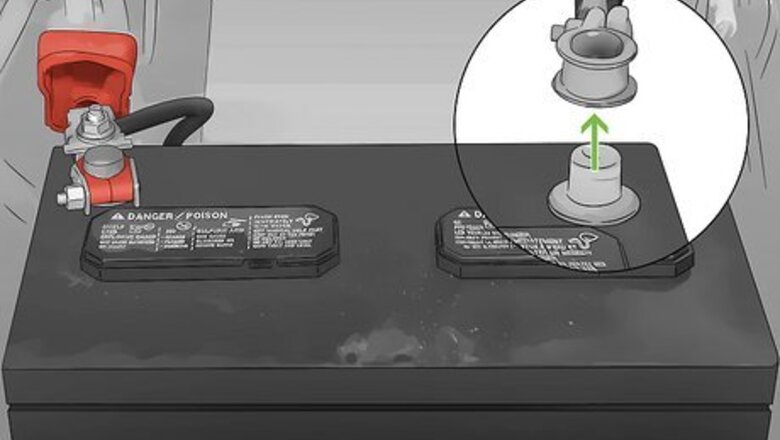
views
- Some speaker cabinets have a recessed lip inside the speaker hole to mount the speaker, while some do not.
- Measure the width of the inner hole and recessed area on the speaker cabinet as well as the mounting frame and cone width of the speaker.
- You'll also need to measure the depth of your speaker cabinet to avoid getting a speaker that is too thick.
Measuring Mounting Holes

Disconnect the speakers. Before you start taking apart your speakers, be sure to disconnect them from the receiver or amplifier to ensure your safety. If you are measuring a car speaker, turn the car off and disconnect the negative battery terminal.
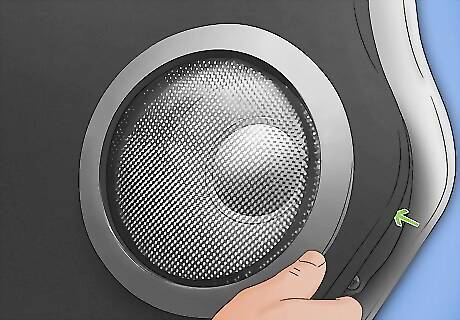
Remove the speaker panels. If you are measuring a car speaker, you will need to remove any panels and screws that get in the way of the speaker. The way you do this will be different from one car model to the next. Consult your user's manual for instructions. If you are measuring home speakers, unscrew or slide the covers off the speaker cabinets.
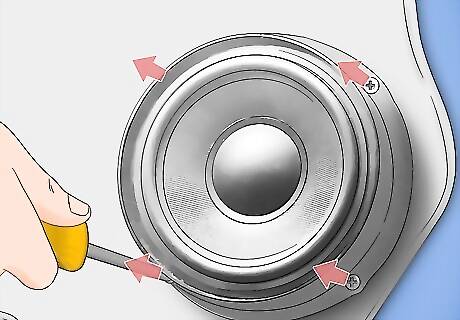
Remove the speaker from the speaker cabinet or harness. Locate the mounting screws on the front side of the speaker and unscrew them using your screwdriver. Once the screws are loose, pull the speaker carefully out of the housing and disconnect any speaker wires attached to it. Some car speakers may be placed in a speaker harness. This is a large metal box that the speaker sits in. If so, you can also detach the wire to the harness and remove the harness.
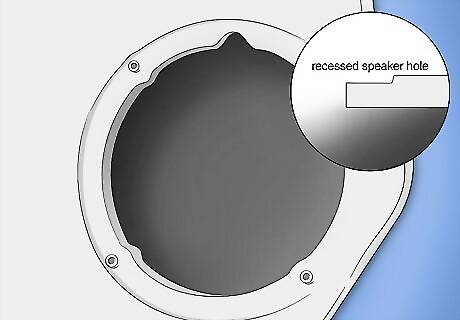
Check if the speaker hole is recessed. Check the hole where the speaker sits inside the speaker cabinet, panel, or harness. If the speaker hole is recessed, there will be a small lip inside the speaker hole that the speaker mounting frame sits on. If the speaker hole is not recessed, the speaker hole will be a solid circle and the speaker mounting frame will sit outside the speaker cabinet or panel.
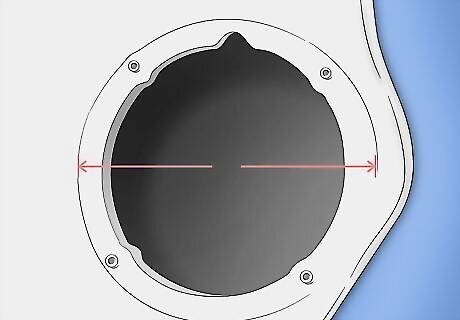
Find the outer diameter of the mounting hole. If the speaker is recessed, you will need to measure the widest area of the outer hole. Use a ruler or tape measure to take a measurement in inches from one edge of the outer hole cutout to the opposite side straight across so you know the maximum size you can get for your new speakers. Write down the measurement so you don’t forget it. If the mounting hole is a shape other than round, measure the widest point on all sides.Tip: If your speaker has a recessed lip, then the cutout diameter of the speaker must be slightly smaller or the same size, or else it won’t fit in the hole.
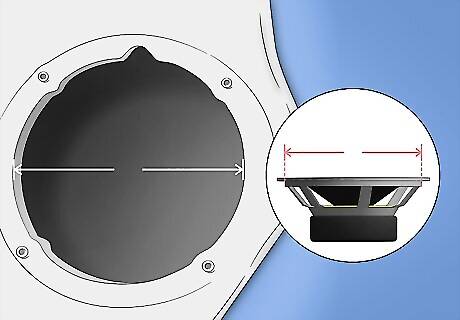
Measure the inner diameter of the hole if there are recessed areas. If the speaker has a cutout inside of a recessed area, place your ruler on one side of the hole inside the recessed area and measure straight across to the other side of the hole. If the speaker isn't round, find the widest point on each side if you have a speaker hole that isn’t round.
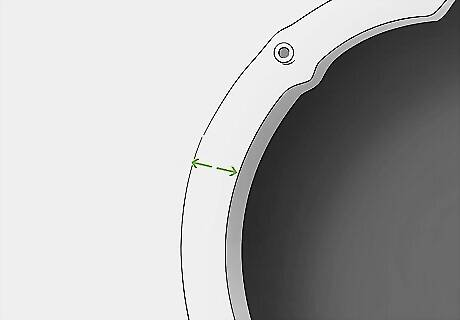
Measure the width from the speaker hole to the edge of the cabinet panel if it is not recessed. If the hole in the speaker cabinet is not recessed, then you will be mounting the speaker to the front of the speaker cabinet or panel. In this case, you will need to know the distance from the hole to the edge of the cabinet or mounting surface area so that you don't buy a speaker with a mounting frame that is too wide. Measure the shortest distance from the speaker hole to the edge of the speaker cabinet or mounting surface in inches, and write it down.
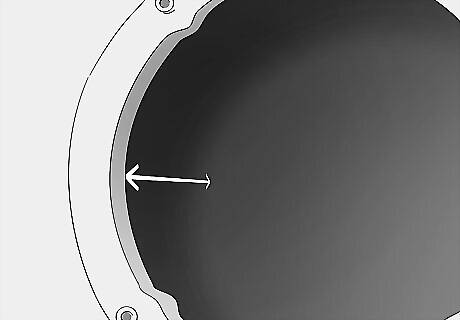
Figure out the depth of the space where you’re placing the speaker. If you are using a speaker cabinet, place it on its back. Stick a ruler inside the mounting hole and push it all the way to the back of the cabinet or mounting area. Make sure the ruler is straight, and measure the depth of the speaker hole. This will determine the maximum thickness your speaker cabinet or car panel can hold. If you get a speaker that’s too tall for your speaker cabinet or panel, you could damage the speaker or it won’t sit flush when you mount it. The back of the speaker should not make contact with the back of the speaker cabinet or car panel.
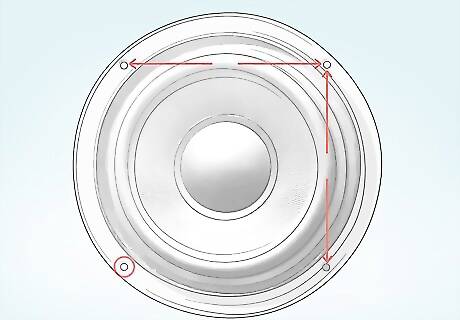
Check the screw pattern around the speaker hole. Hopefully, you can buy speakers that match the same pattern. Look at the pattern of the existing speaker hole you have and find the distance from one of the screw holes to the one directly across from it. Check the distances between the other screws and write them down so you can compare the pattern to any new speakers you purchase. You can also trace the pattern of the screws on a sheet of paper so you have a visual comparison while you’re shopping for speakers. Speakers will come with the mounting screws needed to secure them in place. If you can’t find speakers that have the same screw pattern, you may have to drill your own holes.
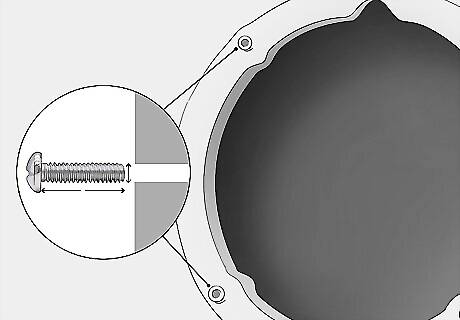
Measure the screw size. This is especially important if you are measuring a car speaker. You will need to get a speaker that uses the size screws to mount the speaker. If not, the speakers may not be able to mount correctly. To measure the screw size, measure the length of the screw from the widest part of the head to the bottom of the screw. Then measure the diameter of the screw at the bottom.
Finding the Speaker Dimensions
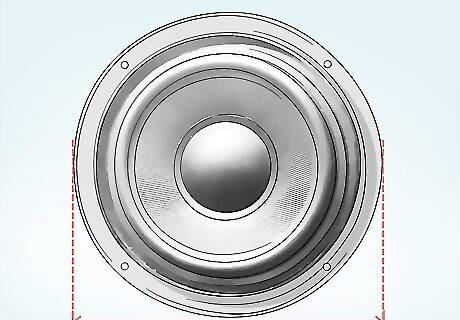
Check the diameter at the widest point of the speaker’s mounting frame. Use a ruler or a tape measure to take your measurements in inches for the speaker. Set your speaker upright so the widest part of the cone is face-up. Take your measurement at the widest point of the speaker from one edge of the mounting frame to the other. Write down the measurement so you don’t forget it later on. If you have a speaker that isn’t round, measure the widest points of each side so know all the dimension. If there are any flat edges, measure from one flat edge to the other. Tip: If the speaker only has 4 holes for mounting screws, then measure the diameter from one of the mounting holes to the one that’s diagonally across from it.
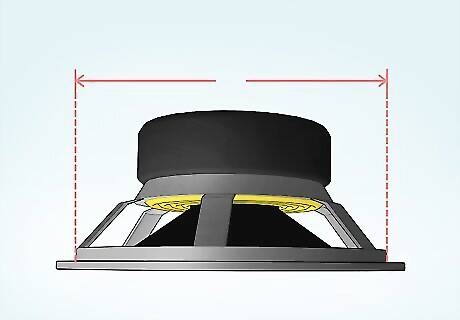
Measure the diameter of the speaker baffle. The speaker baffle is the area the speaker is attached to the inside of the mounting frame. Flip the speaker upside down so the widest part of the cone is face down. Use your tape measure or ruler to find the diameter at the widest point, and write it down so you don’t forget. If your speaker isn’t round, measure the widest point from each side so know each dimension. The cutout diameter needs to be the same size or slightly smaller than the hole where you plan on installing the speaker.
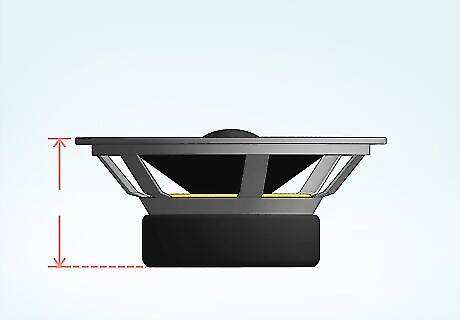
Measure the height from the back of the speaker to the mounting frame. Set your speaker so the wide part of the cone is face-up again. Start your measurement from the bottom of the speaker up to the flat piece of plastic or metal around the cone, also known as the mounting frame. Write down the measurement you took so you don’t forget it. If you have a speaker that’s too tall for the area where you’re putting it, then it won’t sit flush, or it may get damaged when you try to insert it. Be sure to get a new speaker that will not make contact with the back of the speaker cabinet or panel.
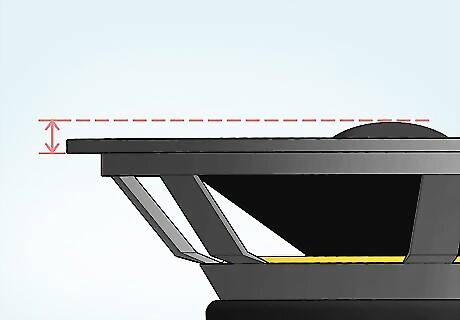
Find the height of the speaker that extends from the mounting frame. Keep the speaker face-up with the widest part pointing up. Start your measurement from the bottom of the mounting plate and find the height between it and the highest point of the speaker. Look at the speaker from the side to determine how far it extends up from the mounting frame. The height that extends out from the mounting plate is important since one that extends too far could get damaged and bump into things. For example, if you have a car speaker that’s too tall, it could damage the cone if you close your car door.
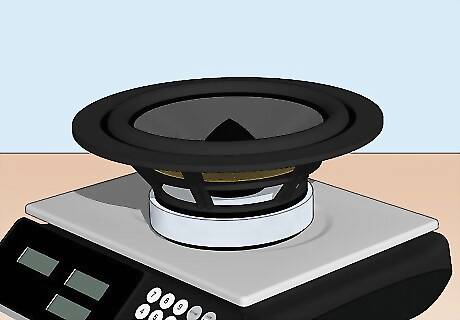
Weigh the speaker. In some cases, it may be important to consider the weight of the speaker. For example, if the speaker is mounted in your car door, you'll want to go with a light-weight speaker. For speakers that are mounted in the dashboard or back of the car, the weight doesn't matter as much.
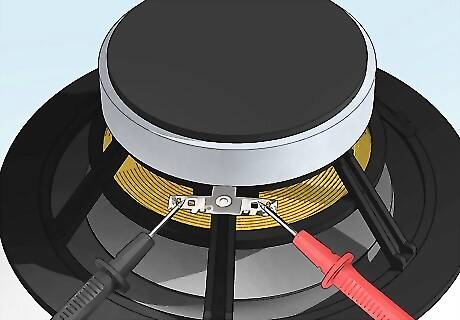
Check the speaker impedance. When wiring new speakers, it's important to consider the speaker impedance. This is the amount of opposition to the electrical current the speaker provides. Purchasing a speaker with the wrong impedance may result in distorted sound. The impedance may be listed on the back of the speaker or speaker cabinet. If it is not, you can use a multimeter to check the impedance of the speaker. Impedance is measured in Ohms (Ω). If you are measuring a car speaker, consider the power rating of your stereo system. If you have a high-power system, you will want to go with a low-sensitivity speaker. If you have a low-power stereo system, you will want to go with a speaker that has a higher sensitivity.




















Comments
0 comment